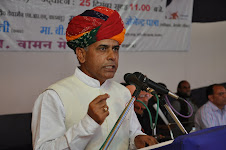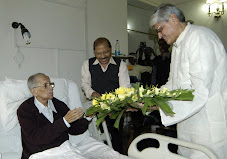FORMER SOVIET UNION: THE GULAG AFTER STALIN
by Wilson Bell
=======================================
(Dissertation Reviews)
A review of Khrushchev's Gulag: The Evolution of Punishment in the Post-Stalin Soviet Union, 1953-1964, by Jeffrey S. Hardy.
There can be no doubt that Gulag studies is a burgeoning sub-field of Soviet history. An annual, peer-reviewed journal with the title Gulag Studies first appeared in 2008, and just the last several years have seen numerous high profile publications on the topic, starting with Anne Applebaum's Pulitzer-prize winning monograph (Anne Applebaum, Gulag: A History. New York: Doubleday, 2003), and continuing to very recent publications including Fyodor Mochulsky's memoir Gulag Boss (Fyodor Mochulsky, Gulag Boss: A Soviet Memoir. Trans. and edited by Deborah Kaple, New York: Oxford University Press, 2011), Steven Barnes' insightful re-examination of the Gulag (Steven A. Barnes, Death and Redemption: The Gulag and the Shaping of Soviet Society. Princeton: Princeton University Press, 2011), the first oral history of the camps (Jehanne Gheith and Katherine Jolluck, Gulag Voices: Oral Histories of Soviet Incarceration and Exile. New York: Palgrave Macmillan, 2011), and many others. Hardy adroitly carves out a niche for himself, however, by focusing on reforms to the Gulag system in the post-Stalin era, a topic that has received only limited scholarly attention. He takes seriously the notion that the reforms resulted in real changes, changes that were never completely rolled back even with the conservative shift of the early 1960s.
Hardy himself has burst on the scene like few other young scholars. His articles have already appeared in Kritika and the Russian Review (and elsewhere), two of the field's top journals. The Association for Slavic, East European, and Eurasian Studies (ASEEES) just awarded his dissertation the prestigious Tucker-Cohen prize. And, finally, he is well into his second book project, an ambitious study of the Gulag in a comparative, global context.
It is not difficult to understand the appeal of his work or its value as a dissertation. "Khrushchev's Gulag" is in many ways a model of dissertation writing, with manageable chronological parameters (roughly 1953-64) and an engaging narrative arc, which begins with Stalin's death, moves dramatically through a period of extensive reform, and ends with incomplete counter-reforms. Most importantly, however, each chapter brings something new and important to the historiography of the camps during this period.
Hardy begins with a provocative comparison to the present-day U.S. penal system, citing the high incarceration rate in the United States as evidence that "imprisonment in America today bears more than fleeting similarity to the Soviet Gulag of the early 1950s" (p. 1). Comparisons with other prisons are made frequently throughout the dissertation, as Hardy argues that many Soviet penal practices—including forced labor and reeducation/rehabilitation—were also prevalent in most modern penal systems. His first chapter provides an overview of penal policy from Stalin's death in 1953 until 1960, when a period of counter-reforms began. This chapter mostly serves as background information for the more in-depth analysis that follows, but nevertheless includes a wealth of information on the scale of the decrease in size of the Gulag, the attempts to reform the camp system by transferring its jurisdiction from the Ministry of Internal Affairs to the Ministry of Justice (and back again), the process of release, and the attempts by Nikolai Dudorov, Khrushchev's appointee as head of Internal Affairs, to decentralize the system—attempts that were only partially successful.
In Chapter 2, on the "mission" of the Gulag, Hardy notes that most modern penal systems have three goals related to economics, control, and reeducation, and that the relative weight of these goals can shift. Hardy discusses all three of these goals as they relate to the early Khrushchev era, arguing that the "orientation of change in this period was decidedly toward re-education," (p. 126) although noting, rightly, that reeducation was difficult for the authorities to measure, resulting in persistent emphasis on economic production figures.
Hardy examines the "Institutions of Oversight and Control," (p. 131) in Chapter 3, focusing on attempts to make the local camp procurators—ostensibly representatives of the Procuracy (office of the Public Prosecutor)—independent of the camp administration, and with some success. In general, camp oversight (local procurators existed in the Stalin era, too) is a neglected topic in Gulag historiography, and this chapter is a fascinating discussion of the issue under Khrushchev. Aside from the Procuracy, Hardy also looks at commissions and sponsoring organizations, provincial and republican courts, local Party and Komsomol cells, labor unions, and even the family as other oversight institutions. He argues that these institutions served to "eliminat[e] the conditions of isolation and autonomy that defined the late Stalinist Gulag" (p. 176) and helped to reduce, drastically, instances of violence within the camps. These institutions are indicative, in other words, of the success of the Khrushchev-era reforms.
Chapter 4, "Visiting the Gulag," has been published in a revised form in The Russian Review (Jeffrey Hardy, "Gulag Tourism: Khrushchev's 'Show' Prisons in the Cold War Context, 1954–59." The Russian Review 71 (2012): 49-78). It is worth noting that some of the strengths of Hardy's dissertation really shine through in this chapter. Here he links Khrushchev's Gulag reforms to broader Cold War goals by focusing on how the authorities prepared certain camps and prisons for official visits from foreign delegations, hoping to create a favorable impression in the foreign news media. This chapter thus also illustrates Hardy's persistent efforts to place the Gulag within a global context, and also represents an almost complete break from the historiography of the period, which focuses primarily on issues of resistance and release.
Finally, Chapter 5 looks at the period from 1960-64, seen by Solzhenitsyn and others as a continuation of—or return to—the repressiveness of the Stalin-era system. Hardy rightly notes that while historians such as Miriam Dobson and Marc Elie have added considerable nuance to this characterization, the overall narrative of counter-reform remains intact (Miriam Dobson, Khrushchev's Cold Summer: Gulag Returnees, Crime, and the Fate of Reform after Stalin. Ithaca: Cornell University Press, 2009; and Marc Elie, "Khrushchev's Gulag: The Soviet Penitentiary System after Stalin's Death, 1953-64." In Denis Kozlov and Eleonory Gilburd (ed.), The Thaw: Soviet Society and Culture during the 1950s and 1960s. Ithaca: Cornell University Press, forthcoming). Hardy himself does not do away with the narrative altogether, either, but argues essentially that scholars have placed too much emphasis on repressive measures. As he writes, "one should not be surprised to still find oppression, corruption, confusion of aims, and disparities between rhetoric and reality, for such are the realities of virtually every system of incarceration." (p. 224) In short, Hardy argues that many of the 1950s reforms remained in place even in the 1960s, and while there was certainly a renewed emphasis on incarceration as punishment during this period, this did not mean a return to Stalin-era repression, especially as "a few of the more onerous provisions of the 1961 statute [on Prisons and Collective Labor Colonies] were reversed in the following years, and Gulag administrators were often lax in applying the new strictures called for by the statute" (p. 259).
As should be clear from this brief overview, Hardy's dissertation is highly significant in relation to the historiography at almost very turn. "Khrushchev's Gulag" mostly sidesteps the well-worn topics of the post-Stalinist Gulag, including the uprisings and strikes in such places as Norilsk and Vorkuta, and the reintegration of prisoners into Soviet society, except where these topics intersect with the issue of post-Stalin reforms. The decision not to focus on better-known topics serves an important function. Hardy can turn his attention almost exclusively to a topic that has not received significant attention in the literature: the actual process of reform, from debates at the upper echelons of the Party and the Gulag hierarchy, to the effects these reforms had on the ground. Most scholars dismiss Khrushchev's efforts as superficial at best, especially given the shift in the early 1960s. But Hardy's significant contribution is to take seriously this process of reform. Furthermore, his frequent comparative remarks place the Gulag in a global context of penal reform, and it is surprising how well Gulag practices of the Khrushchev era fit within broader discussions concerning penology.
Wilson T. Bell
Department of History
Thompson Rivers University
wbell@tru.ca
Primary Sources
Archive of the History of Political Repressions in the USSR (1918-1956), Memorial Society, collection 2: Memoirs and literary works
Branch of the Estonian State Archive (ERAF), multiple collections
State Archive Branch of the Ministry of Internal Affairs of Ukraine (GDA MVS), multiple collections
State Archive of Magadan Province (GAMO), collection R-23 (Dalstroi)
State Archive of the Russian Federation (GARF), multiple collections
Dissertation Information
Princeton University. 2011. vii+298pp. Primary Advisor: Stephen Kotkin.
Subscribe to:
Post Comments (Atom)





































No comments:
Post a Comment